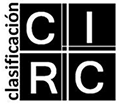The formulation of the Mudéjar style in the century of Romanticism: A proposal of study from the travel literature
DOI:
https://doi.org/10.18002/da.v0i13.986Keywords:
Mudéjar. Style. Aesthetic. Medieval art. Travel literatureAbstract
In 1859, José Amador de los Ríos made his acceptance speech to the Real Academia de Bellas Artes de San Fernando entitled “El estilo mudéjar en arquitectura”. This new stylistic category included modest buildings found in the Spanish territory that shared the characteristics common to the Christian, Romanesque or Gothic style, and also were influenced by the Islamic art developed in al-Andalus between 711 and 1492. The term of Amador de los Ríos became one of the most controversial historiographical debates of the History of Art. According to some researchers, the mudéjar was regarded as a new representative style of Spanish art. Other experts considered the buildings listed under the name mudéjar not to have lost the Romanesque and Gothic essence; even supporting the idea of the “mudéjar style” as a sign of national identity of the nineteenth century. In this sense, this article presents a reflection around this debate and the legitimacy of the use of the term mudéjar as a stylistic category. To do this, I will use buildings descriptions by foreign travelers classified as mudéjar, considering 1859 as the year which marked a turning point.Downloads
Métricas alternativas
Downloads
Published
Issue
Section
License
Copyright (c) 2015 De Arte. Revista de Historia del Arte

This work is licensed under a Creative Commons Attribution-NonCommercial-ShareAlike 4.0 International License.
Los autores que publican en esta revista están de acuerdo con los siguientes términos:
- Los autores ceden de forma no exclusiva los derechos de explotación (reproducción, distribución, comunicación pública, transformación) a la Universidad de León, por lo que pueden establecer, por separado, acuerdos adicionales para la distribución no exclusiva de la versión de la obra publicada en la revista (por ejemplo, alojarlo en un repositorio institucional o publicarlo en un libro), con un reconocimiento de su publicación inicial en esta revista.
- Este trabajo se encuentra bajo la Creative Commons Attribution-NonCommercial-ShareAlike 4.0 International License. Puede consultarse desde aquí la versión informativa y el texto legal de la licencia.
- Se permite y se anima a los autores a difundir electrónicamente las versiones pre-print (versión antes de ser evaluada) y/o post-print (versión evaluada y aceptada para su publicación) de sus obras antes de su publicación, ya que favorece su circulación y difusión más temprana y con ello un posible aumento en su citación y alcance entre la comunidad académica.









